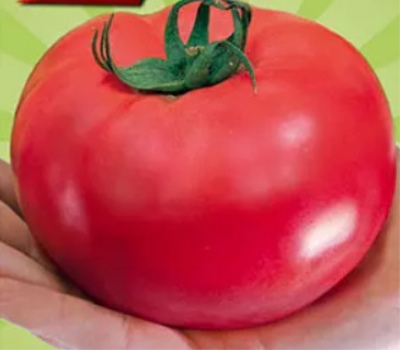
- Authors: Kachainik V.G., Gulkin M.N., Karmanova O.A., Matyunina S.V., Agrofirma AELITA LLC
- Year of approval: 2019
- Category: grade
- Growth type: indeterminate
- Appointment: fresh consumption
- Ripening period: early
- Ripening time, days: 109-112
- Growing conditions: for open ground, for film greenhouses
- Marketability: Yes
- Bush height, cm: 150-170
Tomato Rose Kingdom with large sweet fruits of delicate color managed to fall in love with many summer residents. The variety was bred by the specialists of Agrofirma AELITA LLC in 2019, but has already proven itself perfectly when grown under film and in the open field. High marketability makes the fruits promising for commercial use.
Description of the variety
The tomato is indeterminate, with an average height of a bush of 150-170 cm. Branching and leafiness are average. The inflorescence is complex, the first is laid after the 9th leaf. Bushes are strong and strong, with a powerful central shoot, abundant lateral growth. In fruit clusters 3-4 tomatoes ripen.
The main qualities of the fruit
Unripe tomatoes are colored in a light green tone, ripe ones have a pink skin. The standard weight of fruits varies in the range of 150-170 g, some specimens reach a weight of 200 g. The shape of the tomatoes is round, with slightly pronounced ribs along the contour.
Taste characteristics
The fruits are intended for fresh consumption, in salads or other dishes. The taste is sweet, the flesh is fleshy and juicy, rather tender. The variety is suitable for processing into juices, sauces; it is not very suitable for whole-fruit canning due to the large size of the tomatoes.
Ripening and fruiting
The pink kingdom is an early variety of tomatoes. Fruit ripening takes 109-112 days.
Yield
Average collection volumes are 10.0 kg / sq. m. From a plant, you can get about 3.5 kg of ripe fruits.
The timing of planting seedlings and planting in the ground
Sowing seeds begins in the 1st decade of March, but no later than 60-65 days before the tomatoes are transplanted into open ground. It is obligatory to pick into separate containers as soon as 2 real sheets appear. At the stage of active climb, the stems for seedlings are recommended to be fed with complex preparations such as "Fasco". The bushes are transferred under the film in mid-May. In beds without shelter, you can transplant in early June.

Growing tomato seedlings is an extremely important process, because it largely depends on whether the gardener will be able to harvest at all. All aspects must be taken into account, from seedbed preparation to planting in the ground.
Landing scheme
No more than 3-4 plants are placed per 1 m2. It is recommended to adhere to the 60x50 cm planting pattern.

Growing and care
It is recommended to lead the pink kingdom in 2 stems in the open field, in a greenhouse their number can be increased to 3. In addition to the formation, the bushes definitely need a garter, regular removal of stepchildren. Fertilization is required at least 3 times per season, you can use ready-made complexes or herbal infusions, wood ash.Watering is done only with warm, settled water, abundantly and regularly.




A plant needs different micronutrients at each stage of growth. All fertilizers can be divided into two groups: mineral and organic. Folk remedies are often used: iodine, yeast, bird droppings, eggshells.
It is important to observe the rate and period of feeding. This also applies to folk remedies and organic fertilizers.
Disease and pest resistance
The variety is protected from the main diseases of nightshade crops. Among the pests, it is worth paying attention to the possible appearance of a spider mite. In greenhouses, attention should be paid to ventilation as a preventive measure against fungal diseases, do not forget about disinfecting the soil and the structure of the shelter itself before planting plants.


Resistant to adverse weather conditions
The variety tolerates the vagaries of the weather well. It can withstand a short-term cold snap without shelter, in the heat it continues to give ovaries, the flowers do not crumble. Fruits, even in high humidity conditions, are resistant to cracking.
Review overview
Judging by the reviews of summer residents, the Pink Kingdom, having barely appeared on the market, managed to acquire a large number of fans. Among the advantages of the variety, amateur vegetable growers highlight the early maturity and full ripening of the fruits on the branches both in the greenhouse and in the open field. The yield of the crop occurs evenly, from mid-summer to autumn. The variety is also praised for its good adaptation to changing weather, resistance to major diseases - it is often not necessary to spray them with pesticides or other drugs. The commercial properties of the fruits are also awarded high marks - large calibrated tomatoes are willingly bought, they easily tolerate transportation, they lie in boxes for up to 3-4 weeks.
Disadvantages of the new tomato are also found. Not all summer residents like the need for pinching, but without it, the yield suffers, the fruits become smaller. In addition, the bushes have to be led in several stems to avoid overloading. And also the Pink Kingdom is quite sensitive to good care - it will not work to neglect watering, feeding or weeding.

























































































